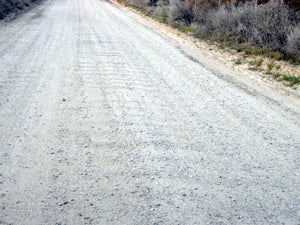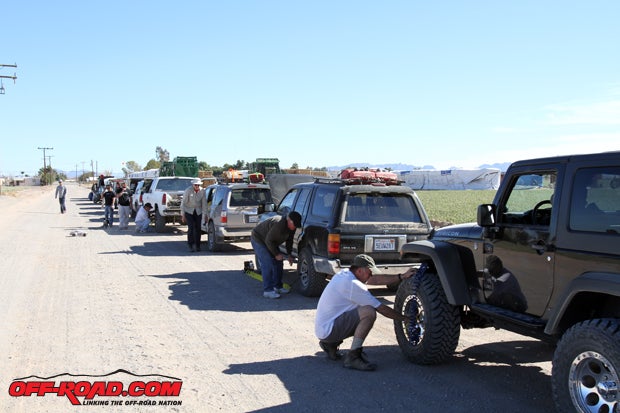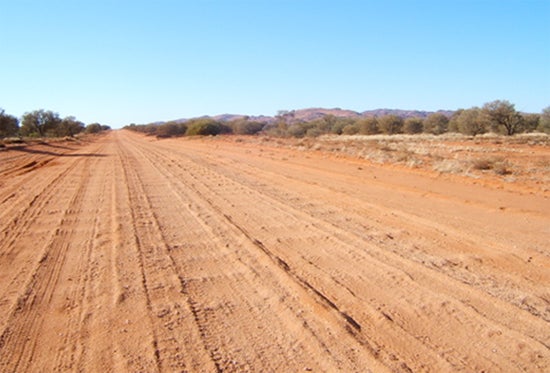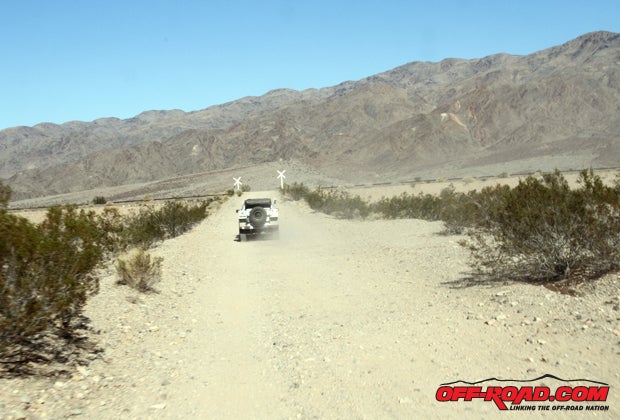 Ah yes, another leisurely drive down a country road. Youíre motoring along peacefully until suddenly bump, bump, bump, bump. Crap. Youíve hit another patch of washboard road. You know, that aggravating, teeth-jarring pattern that shakes your steering wheel and beats the bejesus out of your suspension.
Ah yes, another leisurely drive down a country road. Youíre motoring along peacefully until suddenly bump, bump, bump, bump. Crap. Youíve hit another patch of washboard road. You know, that aggravating, teeth-jarring pattern that shakes your steering wheel and beats the bejesus out of your suspension.
ďWhy donít they grade this road??!!Ē you yell. Well, they did some time ago. But countless cars later, the phenomenon has returned. And you get to experience the joy of riding over it.
Those annoying ripples in the road are not only irritating but are also tough on your vehicle. They can also be hazardous at higher speeds. Special care is needed to drive on such a surface. Adding insult to injury, driving on washboard roads actually makes them worse.
What Causes Washboard Roads?
As amazing as it sounds, the washboard effect is not caused by water flowing across the surface. Washboarding is created as vehicles drive over a surface numerous times. Dr. Keith B. Mather proved this in an experiment in 1963. He published his findings in the January 1963 issue of Scientific American.
More Trail Tips Stories
Checking the Weather Before Heading Off-Road
Off-Road News Years Resolutions You Can Keep
10 Safety Rules for Off-Roading
In order to eliminate the suspension as an issue he was able to create the ripple effect by dragging a plow-like blade over sand. He determined that washboarding occurred at speeds above 3 mph (below this speed, a deep rut was created). The principle behind it is similar to what occurs when you skip a stone over water. Each time the stone hits the water, it very briefly banks up water ahead of itself while also creating a divot-like gap behind.
As vehicles repeatedly drive over loose surfaces, any slight bump causes the tires to bank up the material ahead of the tires while simultaneously digging out behind. The result is a rippling in the road. Contrary to what you might think, driving over those ridges will not flatten them. You can minimize the effect Ė discussed later Ė but the only way to eliminate the washboard pattern is to grade the road. The pattern will return, however.

Washboarding can occur on any loose surface. Off-road, we typically find it between the highway and the trailhead. Some areas are worse than others. Death Valley is just terrible. Ditto for many parts of Mexico.
Why They are Hazardous
Beyond the simple annoyance, driving over washboard roads is dangerous and tough on the vehicle.
Many people find that driving relatively fast over the rough road helps. It does. You minimize the up-and-down motion of the car, but you also do so at a great risk. Understand that at higher speeds your tires are in less contact with the road as they bounce from ridge to ridge. That means only a small fraction of the tire is making contact with the road. Turning and stopping distances are reduced dramatically on an already loose surface. Itís similar to driving over a slippery surface. Add in high speeds and youíre asking for trouble.
Your suspension, meanwhile, is taking a beating. The rapid up-and-down motion puts tremendous stress on the suspension and causes shocks to heat up and fail. The car may feel level to you because your suspension is taking all the abuse.
All that vibration and pounding cause bolts to loosen and parts to crack. Worn tie rod ends, worn-out bushings and CV joints are possible, among other problems.

How to Drive Washboard Roads
Most people slow down when they hit a bad patch of road in hopes of minimizing the rumbling. Unfortunately, no matter the differences in suspension, it conforms to the existing wave-like pattern and actually reinforces the washboard effect over time. Tires are packing down the soft spots and pushing dirt into the high spots. An interesting side note, Dr. Mather discovered the distance between ridges (wave length) increased directly with speed.
These suggestions will help you deal with a bad stretch of road.
Air down the tires: The softer tires will give you a better grip of the road and provide more cushion. Hard tires create washboarding faster as well.
Put your vehicle in 4WD HI: This will help you deal with sliding and skidding. Remember what itís like to drive in ice and snow. Washboarding has a similar effect on the vehicle. While in 4WD HI you power up and turn into the slide a little bit. That will help you maintain control of your vehicle.
Turn off your Automatic Braking System (ABS): The conventional brakes work better in loose material.
Another possibility, though not as safe and possibly illegal, is to drive on a part of the road that doesnít have the wash boarding. That could be the shoulder, the opposite of the road or even a berm along the side. Having even one set of wheels on a smooth surface can make a big difference, but watch for rocks, dips, and other hazards. The biggest risk is that every now and then you run out of bank and end up in a ditch. Or thereís a rock and if you donít see it youíll hit it pretty hard. Slow down, and watch the road carefully.
Driving on Gravel Roads
While weíre on the subject of gravel roads, letís review some safety tips.
As you know, driving on any loose surface requires extra caution. You may think that because you have large, wide tires you have unlimited traction. No so. Just like with snow, gravel offers serious challenges, especially at higher speeds.

Follow these suggestions whenever you drive on gravel:
- Inspect your vehicle before and after the trip for any loose parts, especially relating to the suspension system.
- Slow down. Because your tires arenít gripping as well, turning and stopping distances are greater.
- If a tire gets caught in the soft low berm the grader leaves along the shoulder, youíre likely to jerk the steering wheel to compensate and end up flipping the vehicle.
- Some roads have smooth, well-worn tracks down the middle. If you drive there, be alert for oncoming traffic and other hazards. Get over to your side of the road as you approach a curve or hill.
A trip out in the country can be one of the more enjoyable ways to spend an afternoon. Knowing how to drive on unpaved roads will help keep it that way.
Badlands Off-Road Adventure
Off-road trainer Tom Severin shares insight and tips on a variety of topics related to preparing you for that next off-road adventure. With over 40 years of off-road experience, Severin operates under his business Badlands Off-Road Adventures. He is a certified professional 4WD Trainer by the International 4-Wheel Drive Trainers Association and a Wilderness First Responder (WFR). He is a member of the California Association of Four Wheel Drive Clubs (CA4WDC), United Four Wheel Drive Associations and the BlueRibbon Coalition. He also is a certified UFWDA and a CA4WDC 4WD instructor.
For more information about Badlands Off-Road Adventures, visit 4x4training.com.
More Trail Tips Stories
Checking the Weather Before Heading Off-Road


 Your Privacy Choices
Your Privacy Choices